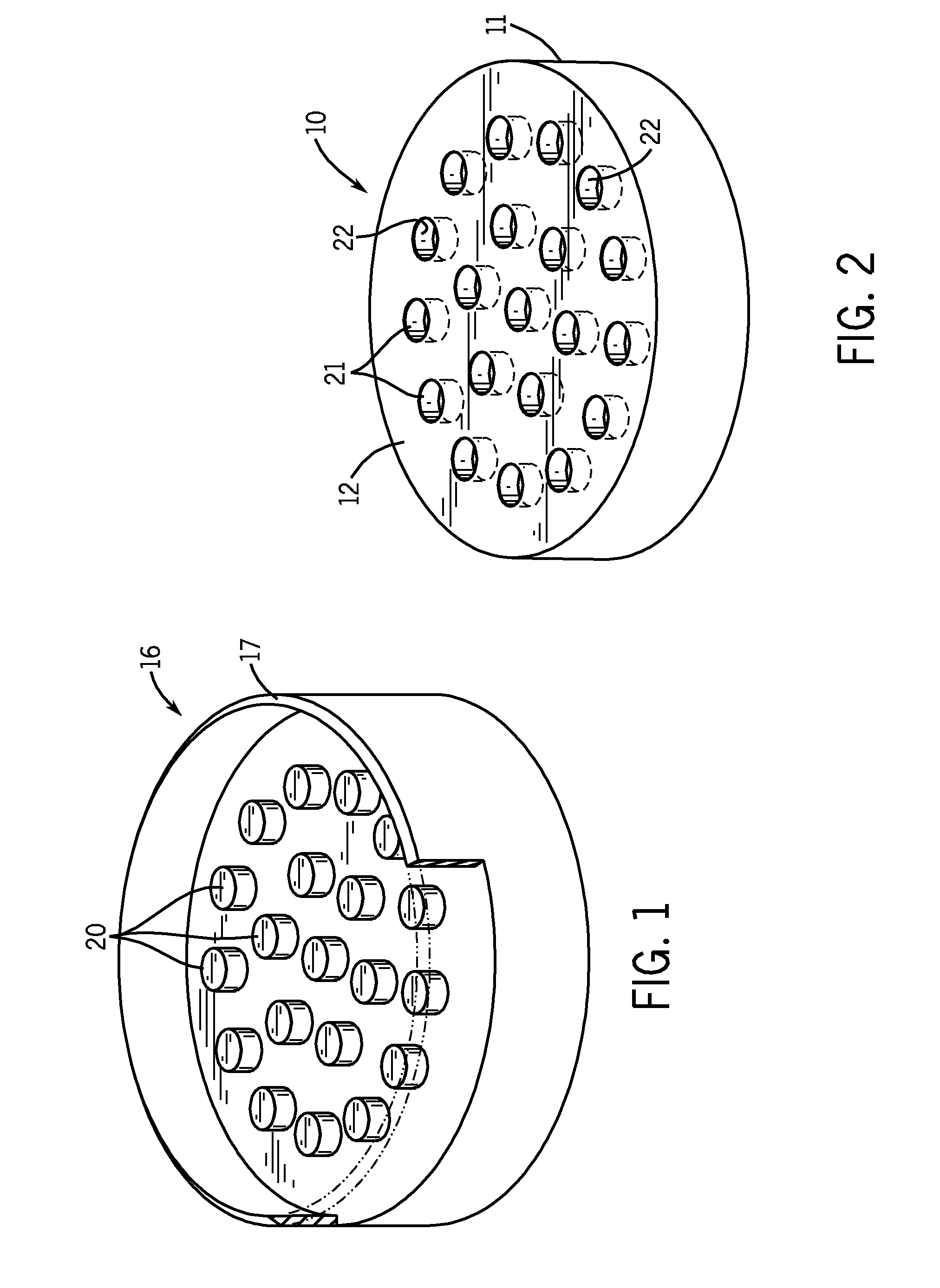Foam Buffing Pad with Random or Strategically Placed Collapsed Cell Structures
a cell structure and foam buffing technology, applied in the direction of grinding devices, carpet cleaners, manufacturing tools, etc., can solve the problems of clogging the hook-and-loop fastening system, affecting the effect of the pad, and preventing the penetration of moisture into the pad attachment fa
- Summary
- Abstract
- Description
- Claims
- Application Information
AI Technical Summary
Benefits of technology
Problems solved by technology
Method used
Image
Examples
Embodiment Construction
[0024]Referring initially to FIGS. 2 and 4, a buffing, polishing or finishing pad 10 is formed from a sheet of polyurethane foam. As is generally well known in the art, the pad 10 is a composite of a foam body 11, having a front operating face 12 and a rear attachment face 13 comprising a sheet of loop scrim 14 attached by heat sealing to the rear face 13 by an intermediate sheet of polyethylene 15.
[0025]The die from which the pad is formed includes a front die half 16 (FIG. 1) having a recessed interior surrounded by a peripheral knife edge 17 to cut the foam body from a sheet of polyurethane foam. A rear die half 18 may include a slightly convex protruding surface 19 that forms a shallow dished rear attachment face 13 on the pad 10. The attachment face could also be flat or planar. The loop scrim 14 on the rear face 13 is intended to be attached to a hook scrim sheet (not shown) comprising the other half of a conventional hook and loop fastening system. The hook scrim sheet is typ...
PUM
| Property | Measurement | Unit |
|---|---|---|
| temperature | aaaaa | aaaaa |
| temperature | aaaaa | aaaaa |
| surface area | aaaaa | aaaaa |
Abstract
Description
Claims
Application Information
 Login to View More
Login to View More - R&D
- Intellectual Property
- Life Sciences
- Materials
- Tech Scout
- Unparalleled Data Quality
- Higher Quality Content
- 60% Fewer Hallucinations
Browse by: Latest US Patents, China's latest patents, Technical Efficacy Thesaurus, Application Domain, Technology Topic, Popular Technical Reports.
© 2025 PatSnap. All rights reserved.Legal|Privacy policy|Modern Slavery Act Transparency Statement|Sitemap|About US| Contact US: help@patsnap.com



